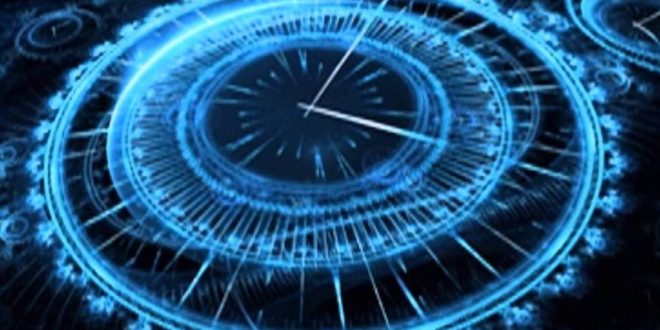It may sit firmly in the realm of science-fiction, but time travel is a mathematical possibility, even if it won’t ever be a reality.
Ben Tippett, a physics instructor at the University of British Columbia Okanagan, is in the middle of a study that tests the feasibility of time travel. Given that his field of expertise is Einstein’s “Theory of Relativity”, Tippett focuses on black holes and science fiction whenever he is not in the classroom. Now, he has done the math to create a formula that may pave the way for the world’s first time machine.
“People think of time travel as something as fiction. And we tend to think it’s not possible because we don’t actually do it,” Ben Tippett said in a UBC news release. “But, mathematically, it is possible.”
Essentially, what Tippet and University of Maryland astrophysicist David Tsang developed is a mathematical formula that uses Einstein’s General Relativity theory to prove that time travel is possible, in theory. That is, time travel fitting a layperson’s understanding of the concept as moving “backwards and forwards through time and space, as interpreted by an external observer,” according to the abstract of their paper, which is published in the journal Classical and Quantum Gravity.
Oh, and they’re calling it a TARDIS — yes, “Doctor Who” fans, hurray! — which stands for a Traversable Acausal Retrograde Domain in Space-time.
FEASIBLE BUT NOT POSSIBLE. YET.
“My model of a time machine uses the curved space-time to bend time into a circle for the passengers, not in a straight line,” Tippet explained. “That circle takes us back in time.” Simply put, their model assumes that time could curve around high-mass objects in the same way that physical space does in the universe.
For Tippet and Tsang, a TARDIS is a space-time geometry “bubble” that travels faster than the speed of light. “It is a box which travels ‘forwards’ and then ‘backwards’ in time along a circular path through spacetime,” they wrote in their paper.
Unfortunately, it’s still not possible to construct such a time machine. “While is it mathematically feasible, it is not yet possible to build a space-time machine because we need materials — which we call exotic matter — to bend space-time in these impossible ways, but they have yet to be discovered,” Tippet explained.
Indeed, their work isn’t the first to suggest that time traveling can be done. Various other experiments, including those that rely on photon stimulation, suggest that time travel is feasible. Another theory explores the potential particles of time.
However, some think that a time machine wouldn’t be feasible because time traveling itself isn’t possible. One points to the intimate connection between time and energy as the reason time traveling is improbable. Another suggests that time travel isn’t going to work because there’s no future to travel to yet.
Whatever the case may be, there’s one thing that these researchers all agree on. As Tippet put it, “Studying space-time is both fascinating and problematic.”
Agencies/Canadajournal
 Canada Journal – News of the World Articles and videos to bring you the biggest Canadian news stories from across the country every day
Canada Journal – News of the World Articles and videos to bring you the biggest Canadian news stories from across the country every day



